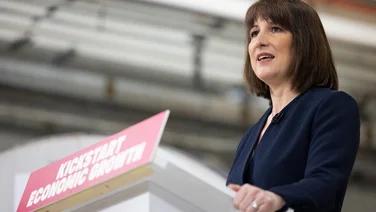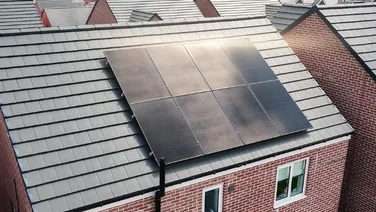✔ The strategy contains no help for people struggling to pay energy bills
✔ It includes new gas and oil projects that won’t produce fuel for decades
✔ There’s no funding for solar, onshore wind, hydropower, or insulation
The energy price cap rose by 54% at the start of April, to £1,971 per year. As of October 2022, it’s now £2,500 — it would’ve been over £3,500 had the UK government’s Energy Price Guarantee not come into effect.
Buying something costs, on average, 6.2% more than it did a year ago.
And Russia’s invasion of Ukraine has created a new moral reason for weaning the UK off fossil fuels, in addition to the urgent need to fight climate change and reach the government’s own goal of net zero emissions.
With the country struggling in the face of these problems, the government has released a new Energy Security Strategy that’s worth more than half a billion pounds in funding.
Here’s what it contains, and what it means for you and your loved ones.

Overview
There is a clear, pressing need to lower household bills while reducing our dependence on Russian energy, but instead, the government has decided to:
- Launch new North Sea oil and gas projects that will worsen climate change and won’t produce fuel for 28 years
- Give no money to solar, onshore wind, insulation, or lowering consumers’ bills
- Dedicate £123 million to long-term nuclear projects
- Throw £366 million at hydrogen in an effort to turn it into a viable fuel
- Announce a three-month review of fracking
- Invest £5 million into carbon capture, an as-yet ineffective, expensive technology
- Spend £30 million on improving the manufacture of heat pumps
Let’s go through these plans in more detail – after all, they add up to £524 million of your money at a time when millions of homes are unable to pay their energy bills.
Gas and oil
The government will start the process to licence new North Sea oil and gas projects in autumn, explaining that “producing gas in the UK has a lower carbon footprint than imported from abroad.”
This is shoddy reasoning, with the government once again propping up fossil fuels instead of investing in renewables. The way to reduce gas’s carbon footprint is to stop producing it.
And that’s not the only reason to avoid North Sea drilling – it also won’t help our current fuel crisis, or indeed provide any help for decades.
The Climate Change Committee (CCC) warned Business Secretary Kwasi Kwarteng in February against issuing new licences in the North Sea.
The independent public body wrote that “the timeline from the issuing of an exploration licence to production commencing ranges from under a decade to several decades, with an average of around 28 years.”
In 28 years, it’ll be 2050 – the year when the UK must legally reach net-zero emissions. Turning on new oil and gas sources that year is not a viable option.
Measures to lower your energy bills
There was nothing in the government’s strategy to help households reduce their energy consumption and alleviate the pressure on millions.
No grants to help pay your ridiculously high bills, no programmes to insulate your home, and no tax on oil and gas companies that could pay for both of these initiatives.
Chancellor Rishi Sunak even rejected a proposal to add £200 million per year to the government’s Energy Company Obligation (ECO) initiative, according to The Telegraph.
The extra money would’ve allowed more households to get their broken heating systems repaired and replaced, their inefficient machines upgraded to eco-friendly versions, some solid wall insulation installed, and to buy smart heating controls – all for free.
The idea, which would’ve represented a 20% rise in funding, received support from Number 10 and the Department for Business, Energy and Industrial Strategy – but the Treasury turned it down.
This decision leaves the millions of households that will be dragged into fuel poverty this year to struggle on with next to no help.

Nuclear
The government “will work to progress a series of projects as soon as possible,” which it hopes will result in eight new reactors being created this decade.
£123.3 million will also be dedicated to funding new developments in the nuclear industry, with a new government body, Great British Nuclear, being set up to hand out most of this money.
The government hopes that this will enable nuclear power to produce “up to around 25%” of the UK’s electricity by 2050, up from its current 15% level.
There’s no explanation of how these actions will lead to that end result, and 2050 is – again – too late to help anyone today.
And of course, nuclear waste remains a deeply dangerous substance that is difficult and expensive to store, and remains radioactive for thousands of years.
Greenpeace has said “there’s no way these new plants can be ready in time to solve our problems,” adding that “nuclear energy is not the solution to our climate crisis, and will make our bills soar.”
Offshore wind
The government announced a new target for offshore wind of “up to 50 gigawatts (GW) by 2030 – more than enough to power every home in the UK.”
To reach this aim – which is 10 GW higher than its previous goal – the government said it will institute “new planning reforms to cut the approval times for new offshore wind farms from four years to one year.”
Reducing the red tape around offshore wind is a positive move, considering more than half of wind projects are currently mired in development.
But with offshore wind only currently producing 10.4 GW, the government should also be funding development and research to reach its new goal.
Onshore wind
The government has promised to look into asking “a limited number of supportive communities” to host onshore wind turbines in exchange for guaranteed lower energy bills.
This is incredibly disappointing. The Conservatives hobbled onshore wind by banning new projects from 2015 onwards.
Around 92% of the UK isn’t built on, and could be used to host countless onshore wind installations that could power millions of homes and businesses – but the government won’t fund the industry.
Hydrogen
The government has dedicated £366 million – the majority of its new funding – to hydrogen, a fuel that currently supplies zero percent of UK energy, and which may never be viable.
The strategy contains a new goal of 10 GW by 2030, which is double the target it unveiled in August 2021.
Half of this will be ‘green hydrogen’ – which is powered by renewable energy but is extremely expensive – with the other half almost certainly created using fossil fuels.
Instead of crossing their fingers that hydrogen will be a silver bullet, the government should focus on existing renewable sources that stand ready to provide more power without producing copious emissions or costing an arm and a leg.
Heat pumps
The strategy outlines a £30 million competition that will ask entrants to improve the heat pump manufacturing process.
It’s stunning how far the government has missed the point here. Consumers need immediate help to buy heat pumps, which currently cost around three times more than inefficient, carbon-intense gas boilers.
The Boiler Upgrade Scheme’s £5,000 discount means a heat pump still costs £5,000, and the £450 million of funding behind it is pitiful.
There also aren’t enough heat pump engineers to get anywhere near the government’s long-stated goal of installing 600,000 heat pumps per year by 2028 – a problem which this strategy ignores.
Solar
The document states that the government wants to increase the country’s solar capacity, and will do so by “consulting on the rules for solar projects, particularly on domestic and commercial rooftops.”
Again, less red tape sounds good, but this promise is one of the vaguest in the entire strategy, and does nothing to address the real barrier to a higher solar capacity, which is the upfront cost.
Carbon capture
The new strategy includes £5 million of funding for research into carbon capture.
This is a technology that has never worked effectively, despite decades of attempts and billions of pounds being ploughed into it across the world – to the extent that most units release more emissions than they capture.
We should absolutely investigate and develop any technology that can help reduce emissions, but carbon capture doesn’t guarantee our energy independence or a net-zero future.
Instead of trying to capture emissions, the UK should simply stop emitting.
Fracking
The new strategy doesn’t mention fracking, but before it was released, Business Secretary Kwasi Kwarteng announced a review into the environmentally destructive practice.
In three months’ time, the British Geological Survey will report back with its findings.
This move is clearly the government kowtowing to anti-environment MPs within its party – and not for the first time.
Our verdict
This is a deeply disappointing plan.
The government could have invested in solar, wind, hydropower, and geothermal energy, and quickly reduced domestic energy bills with grants and a nationwide insulation programme.
This would have provided crucial relief to struggling households, cut our carbon emissions, and decreased our reliance on Russian energy.
Instead, the government has chosen to fund pie-in-the-sky projects like hydrogen and carbon capture, and energy sources like nuclear, gas, and oil that don’t help households now, or even this decade.
The government has insisted its strategy “could see 95% of Great Britain’s electricity set to be low carbon by 2030,” which simply doesn’t make sense, grammatically or otherwise.
Labour’s shadow climate change secretary Ed Miliband summed it up, saying: “This relaunch won’t cut bills, won’t deliver energy independence, and won’t tackle the climate crisis.”
Millions will suffer as a result.






